Sunday morning we visited Utah’s west desert to see what we could turn up out there. We found a pair of American Kestrels, a few Swainson’s Hawks, one Ferruginous Hawk, several Turkey Vultures apparently feeding on a dead calf and four Red-tailed Hawks. But most were difficult to approach, in bad light or on ugly perches.
Note: Some of this post may be of interest only to photographers. I apologize in advance to those of you interested more in the results of bird photography than in the process…
1/2500, f/6.3, ISO 640, 500 f/4, natural light, not baited, set up or called in
But we did find the nesting pair of red-tails that I’ve posted about previously. This bird was perched up a canyon near the nest where its mate was incubating eggs. I caught the hawk at lift-off…
1/2500, f/6.3, ISO 640, 500 f/4, natural light, not baited, set up or called in
and immediately after…
1/2500, f/6.3, ISO 640, 500 f/4, natural light, not baited, set up or called in
and I was able to keep the bird in focus for a long burst of 22 images as it flew to my left. The problem was that it had been perched above me on a hill so when it took off it mostly glided with its wings straight out and shaded underneath so many of those shots aren’t particularly interesting.
1/2500, f/6.3, ISO 640, 500 f/4, natural light, not baited, set up or called in
This was the last image with any light under the wings.
Ok, here’s the conundrum:
1/2500, f/5.6, ISO 640, 500 f/4, 1.4 tc, natural light, not baited, set up or called in
This is an image of the bird before it took off. It’s full frame (not cropped) to show you what I was working with. The image was taken with my tc (teleconverter) attached to my lens to give me as much magnification as possible but the bird is still much too small in the frame for good detail. My only hope was takeoff and flight shots if the bird lifted off (opened wings make the bird much larger in the frame).
I had to make a quick decision about leaving the tc on or taking it off for the potential liftoff. I’m at a distance here that is marginal for the tc at liftoff because when they raise those very long wings it’s easy to clip wings and other body parts while the bird’s in flight. I chose to remove the tc to give me a better chance of not clipping anything and it worked because most of those 22 images in the burst weren’t clipped (although I did have to add canvas for composition to two of these images).
In hindsight, did I make the right decision about removing the tc? I don’t think so. Yes, I did get almost two dozen images with nothing clipped but even in flight the bird was still too small in the frame for really good detail. Most of these flight shots were cropped about 50%. I think I’d prefer to have one or two frame filling images with nothing clipped (the larger the bird is in the frame, especially in flight, the more difficult it is to avoid clipping) than all these images with the bird fairly small in the frame and showing less detail.
But then I might have clipped the bird in ALL the shots if I’d left the tc on.
Conundrum unresolved…
Ron
Note: I may be unable to respond much to comments for the next couple of days but I’ll be reading any that might be made and I’ll catch up on responses when I can.


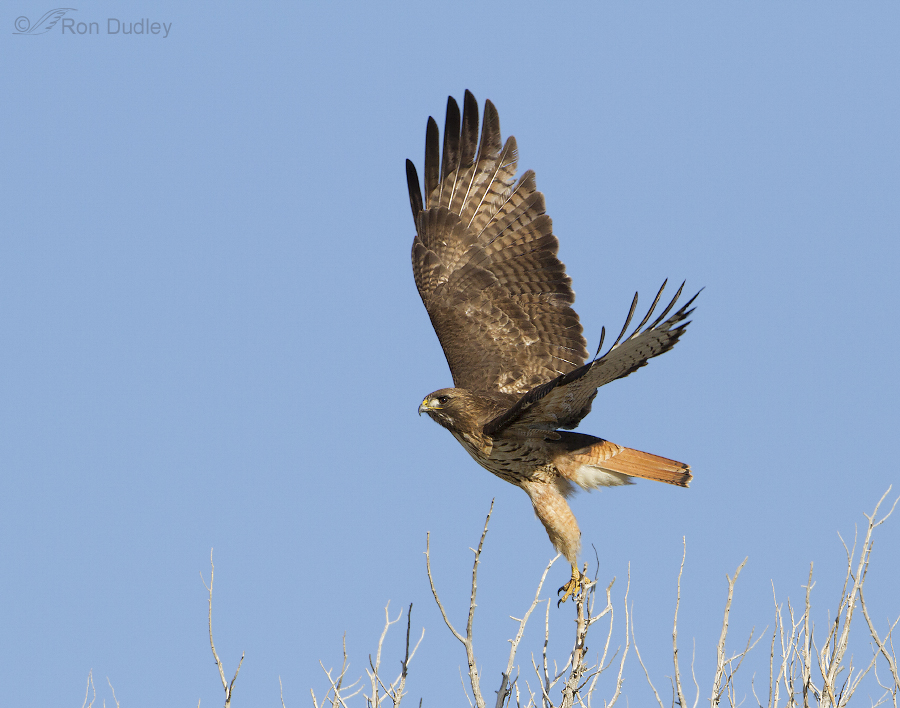
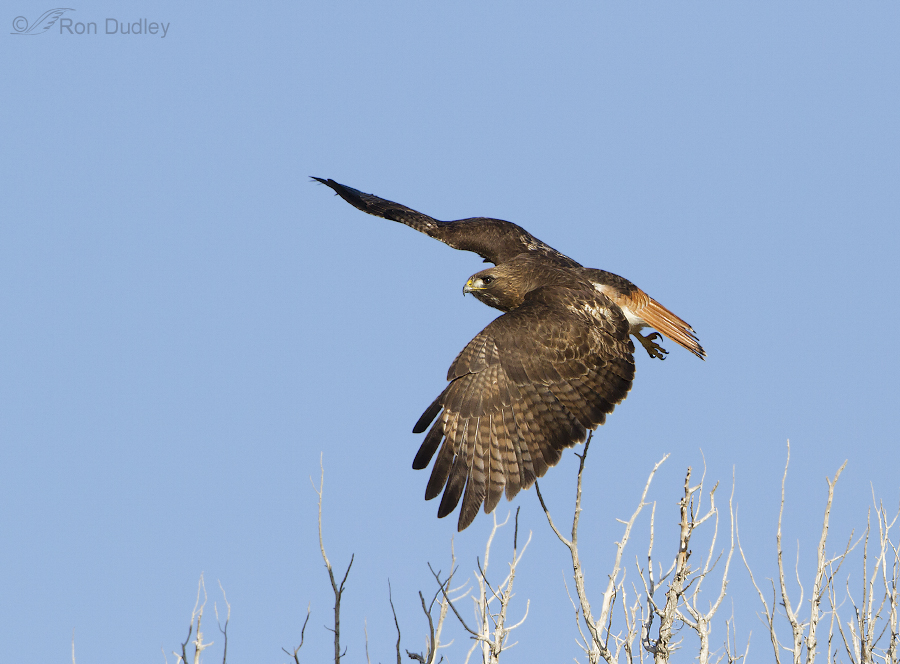
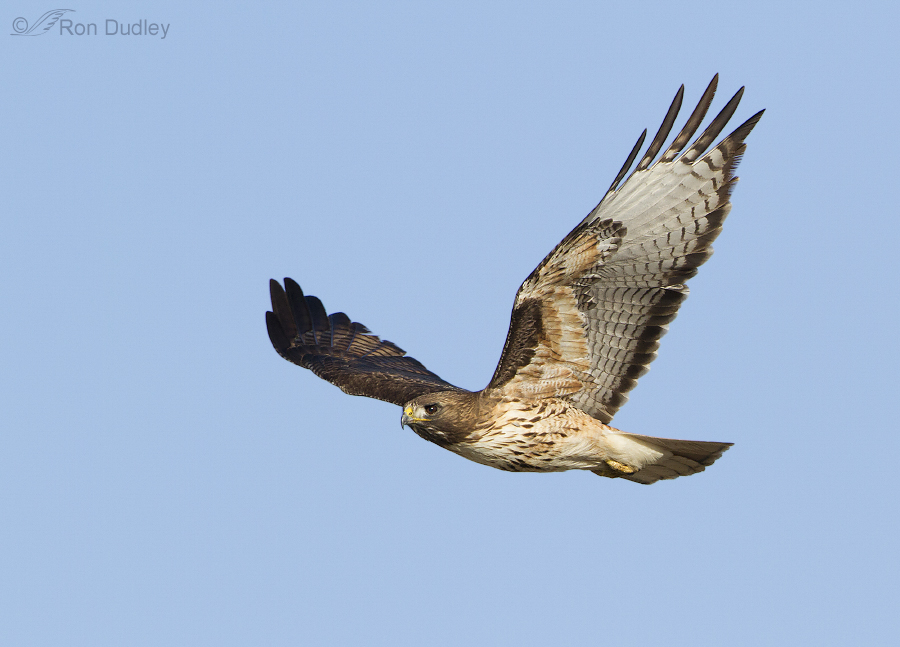
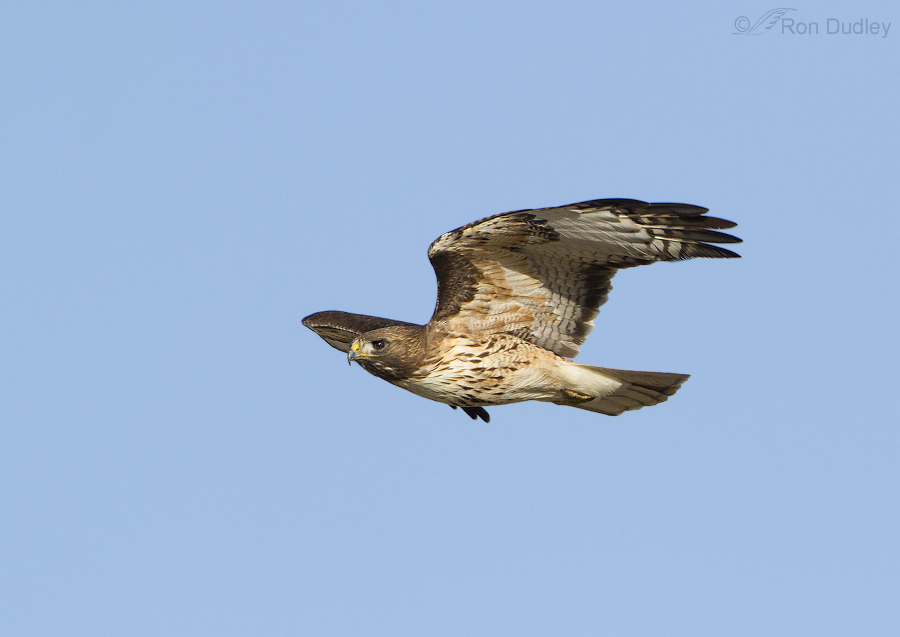
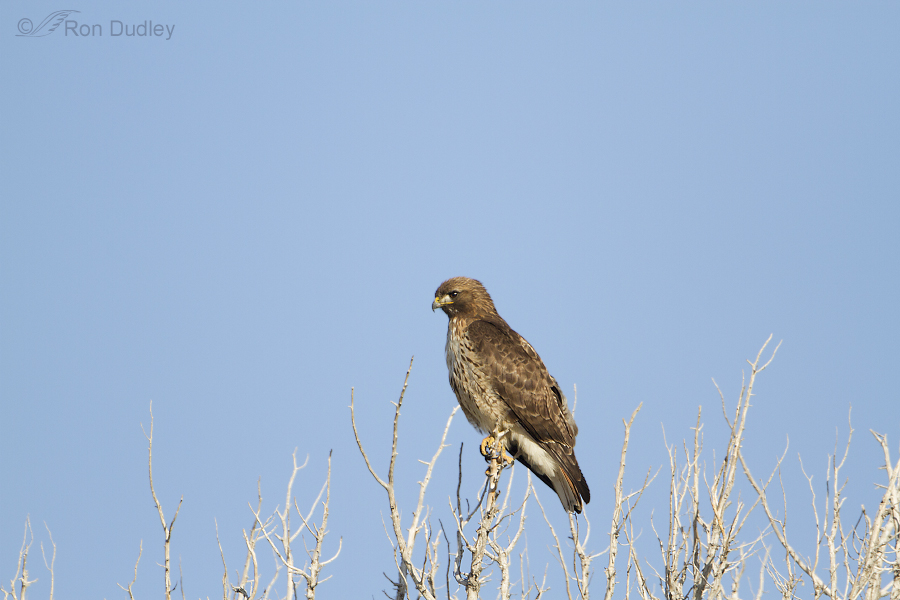
Hi Ron,
I think the TC would have been a good choice, as I’m guessing getting that one image with lots of detail would be much more satisfying than a dozen or more of basically the same scene, and all probably having less detail (not seeing the full rez image here I can’t tell, but it looks like these are holding decent detail at full size?). Also, with a uniform background as you have here with the sky, it leaves you the option to add canvas if you need a little extra space on a image captured with the TC.
Just my two cents. 😉 Awesome captures of an awesome hawk regardless of TC or no TC!
John
I always value your “two cents”, John – ever since that day in Pixels Foto and Frame when you gave me valuable advice on my brand new 7D. And I think you’re right, given the uniform sky background.
I am a happy snapper not a photographer so really don’t have an informed opinion for you. Just the same, these images are such a treat for someone who is unlikely to see this species and rarely sees any of the raptors as anything more than a speck in the sky.
So… thank you again.
I figured you might enjoy them, Elephant’s Child. Just like I do your Australian birds that I’ll never see.
To me, your decision was the right one. Wonderful shots ! I love all them.
Maybe you’re right, Laval – as I said I might have clipped every shot with the tc on.
Oh,to have such a dilemma to begin with! One camera, one long lens, no converter – easy decision!
Since you made the decision within (I presume) mere minutes or less, it was the correct decision at the time. Second-guessing a decision made in the field may be useful for the purpose described in Bruce’s comments. Go prepared to take shots you need/desire, then, as in this case, be flexible based on your instincts and existing/changing conditions.
The results you achieved appear spectacular to me, but I am not a professional and have zero artistic/photographic training – so take my opinions with a huge grain of salt!
In the meantime, thank you for sharing your wonderful posts and images!
Wally, I had to make the decision (and remove the tc) in just a few seconds – that time frame began when the bird defecated, as they usually do just before take-off. It would be interesting to know what I would or wouldn’t have gotten with the tc attached.
I, too, love these images. I think they include plenty of detail, and I like the composition. Even in the last one, where the bird is comparatively small, you can still see detail. Since I take snapshots with a point & shoot and am not what anyone would call a serious photographer, I don’t understand all that goes into serious photography, but I do have a reasonably artistic eye, and all these images are ones I would have been proud to take.
Thanks, Susan. I appreciate you taking the time to explain WHY you like the images. And I suspect that your artistic eye is actually better than “reasonably”…
I’m just in awe with the beauty of the bird’s underwing in the second photo. Such wonderful detail I never see when a RT is in flight.
THIRD photo, of course.
I like that look under the wing also, Naomi.
Isn’t it much more difficult to track a flying bird with the tc on? So that’s a consideration.
I’d agree with Paul that the space around a subject is important, but not by default. If that space consists of only blue sky (without even any clouds), then how is it adding much to the photo?
Lastly, I’d say that wildlife photography is a game of chances and odds. So when deciding what lens combination you are going to use, I think you should consider what type of photo you would most like to have. If you already have many photos of red tails in flight, then choose a combination that might add more close-ups or behavioral shots to your portfolio. And vice versa.
Your last point…that’s actually a good way to look at it. I imagine it applies to other things in life, but I’m gonna remember that when I’m taking pictures of my RT with my cr*ppy camera. 🙂
Tim
Tim, If I had your Red-tail, a reasonably good camera would be a high priority for me. But then I do know that falconry isn’t cheap (by a long shot) all by itself.
“Isn’t it much more difficult to track a flying bird with the tc on? So that’s a consideration.”
Bruce, in some ways it’s easier, in some ways it’s more difficult. Since the bird fills up more of the frame with it on it’s often easier to keep at least one of the focus points locked on the bird when the tc is on. But when it’s off it’s easier to keep the bird in the frame with less magnification. Sixes, perhaps…
Ok….second shot shows what I call the “upward push” to get in the air vertically so as to start the forward glide. Whatever you did to get that shot, it works for me. When some guys train RT’s, they have’em do what’s called “verticals” to build up the strength of the chest and back muscles. Usally the trainer is up a ladder and calling the bird up from ground level. I tend to use a 20 foot pole with a ball covered in leather to do the exercise. Judging from the lift off you so perfectly captured, I can see its a nice strong bird.
“Some of this post may be of interest only to photographers”….true, but I am learning. You’re making want a nicer camera. lol.
Tim
Interesting stuff about how falconers condition their birds, Tim.
Good – I hope you spring for a better camera!
Amazing fantastic shots! I still think you are too hard on yourself! It’s easy to Monday morning quarterback. Just keep them coming!
Maybe I am kind’a hard on myself, Charlotte. Some folks think so but I can’t help it, I guess. Striving for better shots requires seeing the imperfections but it’s also stressful.
Hi Ron
When I was at college studying graphic design, I was told ‘it’s not all about the object’, but the space around it as well, that should be considered. ‘Let it all breath!’ ..I was advised.
You have allowed this extra space (the sky) to give some good compositions that would otherwise not existed if you had kept the tc on. Having the long lens is going to create more of a desire to capture the detail most of the time, yet the pictures you have taken here are really great, especially the first one. Your own standards are able to be high, having the gear you do, but I’d say that you made the right decision and have achieved some very worthwhile compositions indeed.
Cheers,
Paul
Thanks, Paul. That “let it all breathe” advice was one of the hardest lessons I learned when I first started shooting birds. I was so excited to finally get a bird up close in all its glorious detail that my tendency was to sacrifice composition. I still have to fight the tendency occasionally.
Great shots Ron. Color, sharp, just excellent detail!! The flight pictures are wonderful, plus I like to see a bird flying in sky!
From my standpoint, don’t think you lost anything. Love the images.
Thanks, Dick. I like them too but I always wonder what “could have been” in cases like this.